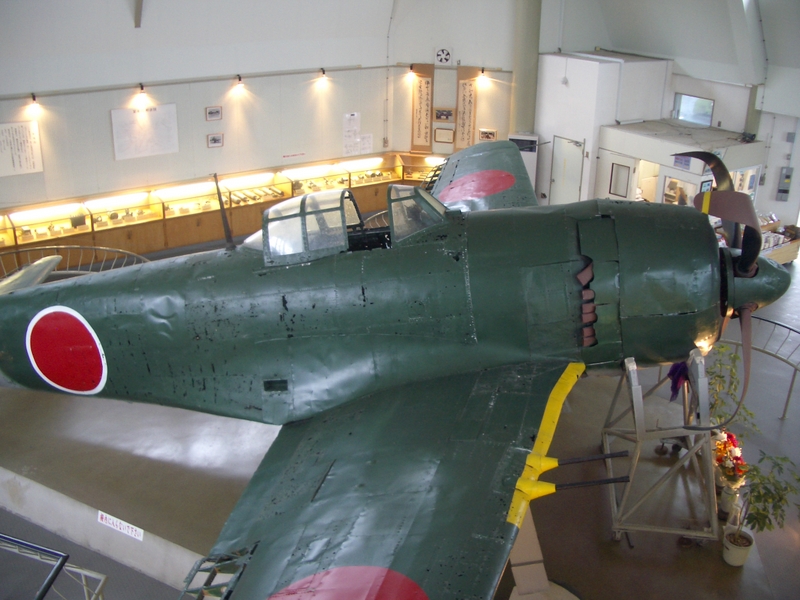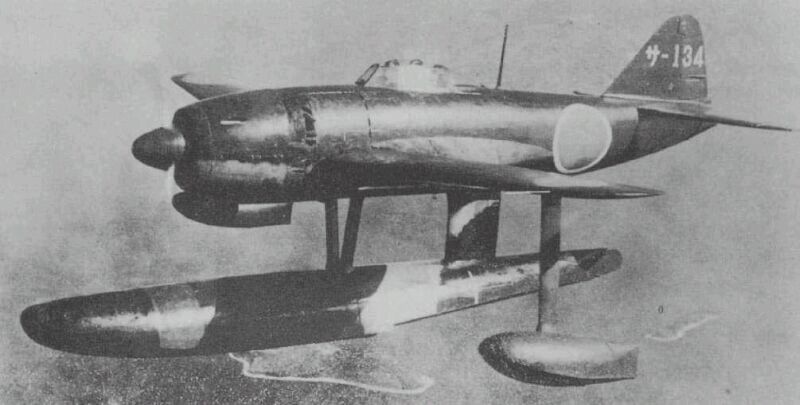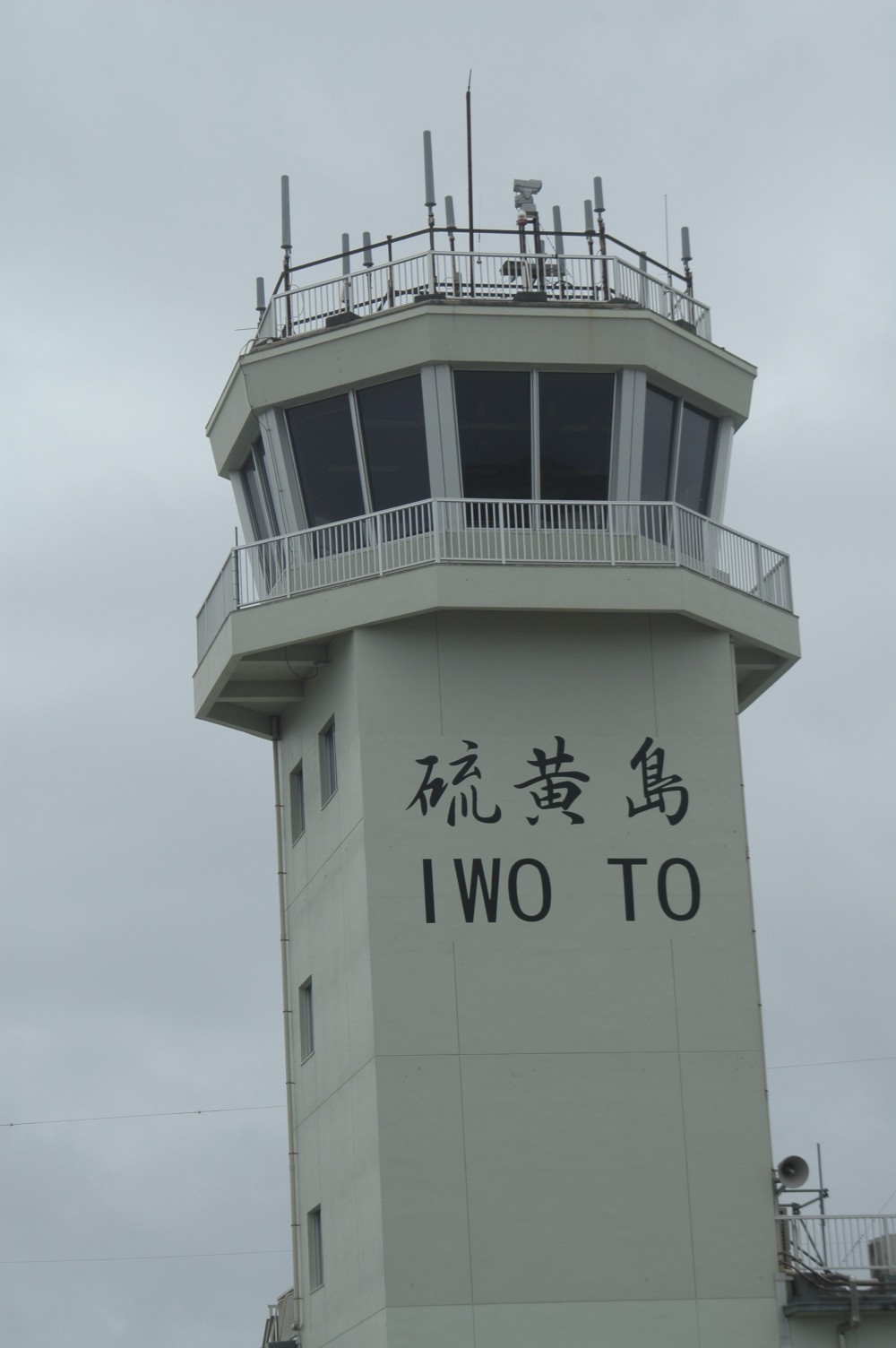|
Kaneyoshi Muto
was a Japanese naval aviator and flying ace known for his great skill in fighter aircraft. Fellow ace Saburō Sakai called him "a genius in the air." Second Sino-Japanese War Kaneyoshi Muto was born to a humble farming family in June 1916 in Aichi Prefecture. Muto grew to a height of —short in stature—and enlisted in the Imperial Japanese Navy in June 1935 when he was 19. After serving for a brief period aboard the destroyer ''Uranami'' he applied for flight training to advance his career. In July 1936 he graduated as a naval aviator and was assigned to the Omura Air Group. Muto went to war in China flying with the 12th Air Group. He earned his first air victory on 4 December 1937 during the Battle of Nanking when he shot down a Soviet-made Polikarpov I-16. Muto continued fighting in China, flying many sorties over Hankou to become an ace with five victories. For his distinguished service, he was honored with an official commendation on 30 April 1938. Among his fellow pil ... [...More Info...] [...Related Items...] OR: [Wikipedia] [Google] [Baidu] |
Aichi Prefecture
is a prefecture of Japan located in the Chūbu region of Honshū. Aichi Prefecture has a population of 7,552,873 () and a geographic area of with a population density of . Aichi Prefecture borders Mie Prefecture to the west, Gifu Prefecture and Nagano Prefecture to the north, and Shizuoka Prefecture to the east. Overview Nagoya is the capital and largest city of Aichi Prefecture, and the fourth-largest city in Japan, with other major cities including Toyota, Okazaki, and Ichinomiya. Aichi Prefecture and Nagoya form the core of the Chūkyō metropolitan area, the third-largest metropolitan area in Japan and one of the largest metropolitan areas in the world. Aichi Prefecture is located on Japan's Pacific Ocean coast and forms part of the Tōkai region, a subregion of the Chūbu region and Kansai region. Aichi Prefecture is home to the Toyota Motor Corporation. Aichi Prefecture had many locations with the Higashiyama Zoo and Botanical Gardens, The Chubu Centrair Internat ... [...More Info...] [...Related Items...] OR: [Wikipedia] [Google] [Baidu] |
Clark Air Base
Clark Air Base is a Philippine Air Force base on Luzon Island in the Philippines, located west of Angeles City, about northwest of Metro Manila. Clark Air Base was previously a United States military facility, operated by the U.S. Air Force under the aegis of Pacific Air Forces (PACAF) and their predecessor organizations from 1903 to 1991. The base covered with a military reservation extending north that covered another . The base was a stronghold of the combined Philippine and American forces during the final months of World War II and a backbone of logistical support during the Vietnam War until 1975. Following the departure of American forces in 1991 due to the eruption of Mount Pinatubo, the base became the site of Clark International Airport, as well as the Clark Freeport Zone and the Air Force City of the Philippine Air Force. In April 2016, an Air Contingent of USAF A-10s and HH-60s was deployed from U.S. air bases in Pyeongtaek and Okinawa to Clark. The Air Con ... [...More Info...] [...Related Items...] OR: [Wikipedia] [Google] [Baidu] |
Grumman F6F Hellcat
The Grumman F6F Hellcat is an American Carrier-based aircraft, carrier-based fighter aircraft of World War II. Designed to replace the earlier Grumman F4F Wildcat, F4F Wildcat and to counter the Japanese Mitsubishi A6M Zero, it was the United States Navy's dominant fighter in the second half of the Pacific War. In gaining that role, it prevailed over its faster competitor, the Vought F4U Corsair, which initially had problems with visibility and carrier landings. Powered by a Pratt & Whitney R-2800 Double Wasp, the same powerplant used for both the Corsair and the United States Army Air Forces (USAAF) Republic P-47 Thunderbolt fighters, the F6F was an entirely new design, but it still resembled the Wildcat in many ways. Some military observers tagged the Hellcat as the "Wildcat's big brother".Sullivan 1979, p. 4. The F6F made its combat debut in September 1943. It subsequently established itself as a rugged, well-designed carrier fighter, which was able to outperform the A6M Zer ... [...More Info...] [...Related Items...] OR: [Wikipedia] [Google] [Baidu] |
Type 99 Cannon
The Type 99 Mark 1 machine gun and Type 99 Mark 2 machine gun were Japanese versions of the Oerlikon FF and Oerlikon FFL autocannons respectively. They were adopted by the Imperial Japanese Navy (IJN) in 1939 and served as their standard aircraft autocannon during World War II. Adoption In 1935, officers in the Imperial Japanese Navy began to investigate 20 mm automatic cannon as armament for future fighter aircraft.Robert C. Mikesh, ''Zero'', Motorbooks USA, 1994. Their attention was drawn to the family of aircraft autocannon manufactured by Oerlikon, the FF, FFL and FFS. These all shared the same operating principle, the advanced primer ignition blowback mechanism pioneered by the Becker cannon, but fired different ammunition: 20×72RB, 20×101RB, and 20×110RB, respectively. Following the import and evaluation of sample guns, the Imperial Japanese Navy decided in 1937 to adopt these weapons. To produce the Oerlikon guns, a group of retired Navy admirals created a new ar ... [...More Info...] [...Related Items...] OR: [Wikipedia] [Google] [Baidu] |
Mitsubishi J2M
The Mitsubishi J2M ''Raiden'' (雷電, "Lightning Bolt") is a single-engined land-based fighter aircraft used by the Imperial Japanese Navy Air Service in World War II. The Allied reporting name was "Jack". Design and development The J2M was designed by Jiro Horikoshi, creator of the A6M Zero, to meet the 14-Shi (14th year of the Showa reign, or 1939) official specification. It was to be a strictly local-defense interceptor, intended to counter the threat of high-altitude bomber raids, and thus relied on speed, climb performance, and armament at the expense of manoeuvrability. The J2M was a sleek, but stubby craft with its oversized Mitsubishi Kasei engine buried behind a long cowling, cooled by an intake fan and connected to the propeller with an extension shaft. Teething development problems stemming from the Kasei engine cooling system, and the main undercarriage members led to a slowdown in production. A continual set of modifications resulted in new variants being introdu ... [...More Info...] [...Related Items...] OR: [Wikipedia] [Google] [Baidu] |
Mitsubishi A6M Zero
The Mitsubishi A6M "Zero" is a long-range carrier-based aircraft, carrier-based fighter aircraft formerly manufactured by Mitsubishi Aircraft Company, a part of Mitsubishi Heavy Industries, and was operated by the Imperial Japanese Navy from 1940 to 1945. The A6M was designated as the , or the Mitsubishi A6M Rei-sen. The A6M was usually referred to by its pilots as the ''Reisen'' (, zero fighter), "0" being the last digit of the Japanese calendar#Years, imperial year 2600 (1940) when it entered service with the Imperial Navy. The official World War II Allied names for Japanese aircraft, Allied reporting name was "Zeke", although the name "Zero" (from Type 0) was used colloquially as well. The Zero is considered to have been the most capable carrier-based aircraft, carrier-based fighter in the world when it was introduced early in World War II, combining excellent maneuverability and very long range.Hawks, Chuck"The Best Fighter Planes of World War II" chuckhawks.com. Retrieved: ... [...More Info...] [...Related Items...] OR: [Wikipedia] [Google] [Baidu] |
Kawanishi N1K
The Kawanishi N1K ''Kyōfū'' (, "Strong Wind", Allied reporting name "Rex") is an Imperial Japanese Navy floatplane fighter. The Kawanishi N1K-J ''Shiden'' (, "Violet Lightning") was an Imperial Japanese Navy Air Service land-based version of the N1K. Assigned the reporting name "George", the N1K-J was considered by both its pilots and opponents to be one of the finest land-based fighters flown by the Japanese during World War II. The ''Shiden Kai'' possessed heavy armament, as well as surprisingly good maneuverability, due to a mercury switch that automatically extended the flaps during turns. These "combat" flaps created more lift, thereby allowing tighter turns. Unlike the Mitsubishi A6M Zero, the ''Shiden Kai'' could compete against the best late-war Allied fighters, such as the F6F Hellcat, F4U Corsair, and P-51 Mustang. Design and development Kawanishi's N1K was originally built as a single pontoon floatplane fighter to support forward offensive operations where no ... [...More Info...] [...Related Items...] OR: [Wikipedia] [Google] [Baidu] |
Naval Air Facility Atsugi
is a joint Japan-US naval air base located in the cities of Yamato and Ayase in Kanagawa, Japan. It is the largest United States Navy (USN) air base in the Pacific Ocean and once housed the squadrons of Carrier Air Wing Five (CVW-5), which deploys with the aircraft carrier . During 2017 and 2018 the fixed-wing aircraft of CVW-5 relocated to Marine Corps Air Station Iwakuni in western Japan. CVW-5 shares the base with the Headquarters Fleet Air Force and Fleet Air Wing 4 of the Japan Maritime Self-Defense Force (JMSDF). NAF Atsugi is also home to Helicopter Maritime Strike Squadron 51 (HSM-51), which provides detachments of MH-60R helicopters to forward deployed U.S. Navy guided missile cruisers, guided missile destroyers and frigates homeported at the nearby Yokosuka Naval Base. Service members stationed at Atsugi also work in conjunction with the former Kamiseya Naval Radio Receiving Facility. Despite its name, the base is east northeast from the city of Atsugi, and is ... [...More Info...] [...Related Items...] OR: [Wikipedia] [Google] [Baidu] |
Boeing B-29 Superfortress
The Boeing B-29 Superfortress is an American four-engined propeller-driven heavy bomber, designed by Boeing and flown primarily by the United States during World War II and the Korean War. Named in allusion to its predecessor, the B-17 Flying Fortress, the Superfortress was designed for high-altitude strategic bombing, but also excelled in low-altitude night incendiary bombing, and in dropping naval mines to blockade Japan. B-29s dropped the atomic bombs on Hiroshima and Nagasaki, the only aircraft ever to drop nuclear weapons in combat. One of the largest aircraft of World War II, the B-29 was designed with state-of-the-art technology, which included a pressurized cabin, dual-wheeled tricycle landing gear, and an analog computer-controlled fire-control system that allowed one gunner and a fire-control officer to direct four remote machine gun turrets. The $3 billion cost of design and production (equivalent to $ billion today), far exceeding the $1.9 b ... [...More Info...] [...Related Items...] OR: [Wikipedia] [Google] [Baidu] |
343rd Naval Air Group
The was an aircraft and airbase garrison unit of the Imperial Japanese Navy (IJN) during the Pacific campaign of World War II. Created in late 1944 due to the desperate situation of Japan in the closing stages of the war, the 343rd was composed of the best surviving ace fighter pilots the Imperial Navy had at the time, with Captain Minoru Genda in command. This unit was equipped with the best airplane Japan had left by then, the Kawanishi N1K2-J Shiden-Kai, known as George by the Allies; this aircraft could compete with the best wartime Allied fighters, namely, the F6F Hellcat, the P-51 Mustang and the F4U Corsair. Operational history IJN 343rd Air Group (''343 Kōkūtai'' Naval Fighter Group), commanded by Minoru Genda, which was constituted on 25 December 1944. The new 343rd ''Kōkūtai'' consisted of the best pilots, including Kaneyoshi Muto. The unit was issued the best equipment available and was also equipped with the new Nakajima C6N ''Saiun'', codenamed "Myrt" long-ran ... [...More Info...] [...Related Items...] OR: [Wikipedia] [Google] [Baidu] |
Minoru Genda
was a Japanese military aviator and politician. He is best known for helping to plan the attack on Pearl Harbor. He was also the third Chief of Staff of the Japan Air Self-Defense Force. Early life Minoru Genda was the second son of a farmer from Kake, Hiroshima Prefecture, north of the city of Hiroshima. Two brothers were graduates of Tokyo University, another brother graduated from Chiba Medical College, and his youngest brother entered the Army Academy. Genda graduated from the Imperial Japanese Naval Academy in 1924 and took flight training for 11 months in 1928–1929, graduating with honors to become a fighter pilot. Early military service Genda was assigned to the aircraft carrier in 1931. He was well known in the navy, and in 1932 Genda formed a demonstration team at Yokosuka, leading a division of biplanes around the country, conducting aerobatic demonstrations. Known as "Genda's Flying Circus", the team, consisting of Genda, Yoshita Kobayashi and Motoharu Okamu ... [...More Info...] [...Related Items...] OR: [Wikipedia] [Google] [Baidu] |
Iwo Jima
Iwo Jima (, also ), known in Japan as , is one of the Japanese Volcano Islands and lies south of the Bonin Islands. Together with other islands, they form the Ogasawara Archipelago. The highest point of Iwo Jima is Mount Suribachi at high. Although south of the metropolis of Tokyo on the mainland, this island of 21 km2 (8 square miles) is administered as part of the Ogasawara Subprefecture of Tokyo. Since July 1944, when all the civilians were forcibly evacuated, the island has had a military-only population. The island was the location of the Battle of Iwo Jima between February 1945 and March 1945. This engagement saw some of the fiercest fighting of the Pacific War, with each side suffering over 20,000 casualties in the battle. The island became globally recognized when Joe Rosenthal, of the Associated Press, published his photograph '' Raising the Flag on Iwo Jima'', taken on Mount Suribachi. The US military occupied Iwo Jima until 1968, when it was returned to ... [...More Info...] [...Related Items...] OR: [Wikipedia] [Google] [Baidu] |








